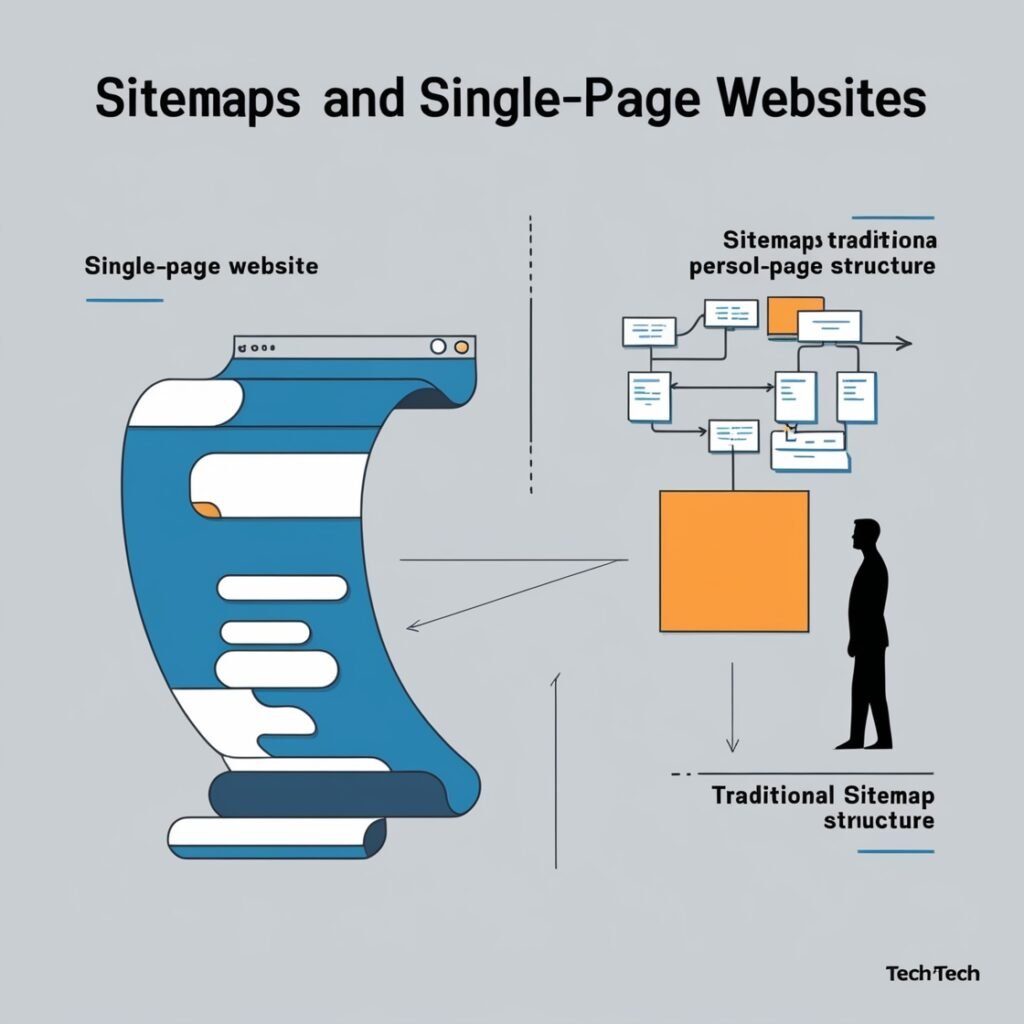The Client Call That Started It All
It was a Tuesday afternoon when I got the call. You know, one of those calls seems routine at first but sends you down a rabbit hole of research and head-scratching.
“Hey Sarah, it’s Mike from CoolTech Startups. We’re launching our new product next month and want to go with a single-page website. Super sleek, minimal, the works. But here’s the thing – do we need a sitemap for this? I mean, it’s just one page, right?”
I laughed, thinking Mike was joking. But the silence on the other end told me he was dead serious. And just like that, I found myself diving headfirst into the debate dividing the SEO community: do single-page websites need sitemaps?
My Sitemap Obsession: Confessions of an SEO Nerd
Now, let me tell you a secret. I used to be a sitemap fanatic. Seriously, I was that person at networking events boring everyone to tears with talks about XML structures and crawl efficiency. My first-ever SEO project? I spent three whole days crafting the perfect sitemap for a local bakery’s website. Overkill? Absolutely. But hey, we all have our obsessions.
So when Mike asked about sitemaps for his single-page site, my knee-jerk reaction was, “Of course you need one!” But then I paused. This wasn’t 2010 anymore, and I wasn’t a fresh-faced SEO newbie. It was time to put my years of experience to the test and really think this through.
Faqs About Sitemaps
Not necessarily, but it’s often beneficial. A landing page works for specific campaigns, but a full website offers broader content opportunities, improved SEO potential, enhanced credibility, and space for multiple products/services. Consider your long-term goals when deciding.
Absolutely! This combination can be powerful. Use your website as your main online presence and landing pages for specific campaigns or products. Ensure consistent branding across both for maximum impact.
Yes, landing pages can be optimized for search engines. Focus on specific, targeted keywords, optimize meta tags and content, ensure fast loading speed, and use relevant, high-quality content. Remember, their SEO strategy often differs from regular web pages due to their focused nature.
Yes, multiple sitemaps can be beneficial, especially for large or complex websites. You can use separate sitemaps for different content types, manage large sites more easily, and work within XML sitemap size limits. Submit all sitemaps to search engines for comprehensive indexing.
Creating a sitemap for an existing site is straightforward. You can use online sitemap generator tools, employ CMS plugins (e.g., Yoast for WordPress), manually create an XML file, or use crawling software for larger sites. Ensure your sitemap includes all important, crawlable URLs.
A sitemap can contain up to 50,000 URLs and should not exceed 50MB when uncompressed. For larger sites, create multiple sitemaps and use a sitemap index file to list them. Prioritize including your most important and frequently updated pages.
The Great Single-Page Sitemap Experiment
I decided to run a little experiment. I took two nearly identical single-page websites I was working on – let’s call them Site A and Site B. Both were for local food trucks (yes, I have a thing for food-related clients). Site A got the full sitemap treatment, while Site B went commando – no sitemap, just well-structured content and proper header tags.
For three months, I watched these sites like a hawk. I’m talking daily rank checks, obsessive Google Search Console monitoring, and the works. My partner thought I’d lost it. “It’s just a sitemap,” he’d say. But to me, this was SEO science in action.
The results? Well, they surprised even me. Site B, the one without a sitemap, actually outperformed Site A in local search results. It ranked higher for key terms like “best tacos in Portland” and “gourmet food truck downtown.”
But here’s the kicker – when I dug into the Search Console data, I noticed that Google was having an easier time understanding and indexing the different sections of Site A, the one with the sitemap. It was like the sitemap was a roadmap, helping Google navigate the single page more efficiently.
So, what did this little experiment teach me? In the world of single-page websites and sitemaps, there’s no one-size-fits-all answer. It depends on your specific site, your content, and your goals.
In Mike’s case, we ended up creating a slim sitemap for his single-page site. Why? Because his page was content-heavy, with multiple sections we wanted to make sure Google could easily understand and index separately.
The moral of the story? Don’t let anyone tell you that you absolutely must or must not have a sitemap for your single-page site. Test it out, see what works for you, and always, always be ready to adapt. Because if there’s one thing I’ve learned in my years of doing SEO, it’s that the only constant in this field is change.
Next time, I’ll share some practical tips on creating a sitemap for a single-page website – without going overboard like I did with that poor bakery years ago. Trust me, your single-page site doesn’t need a sitemap the size of War and Peace. But more on that later!
Stay curious, fellow SEO adventurers!







